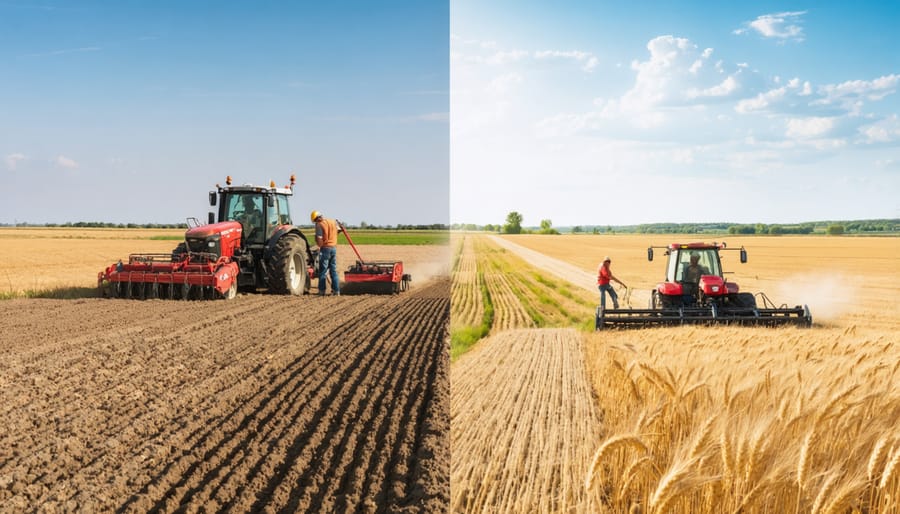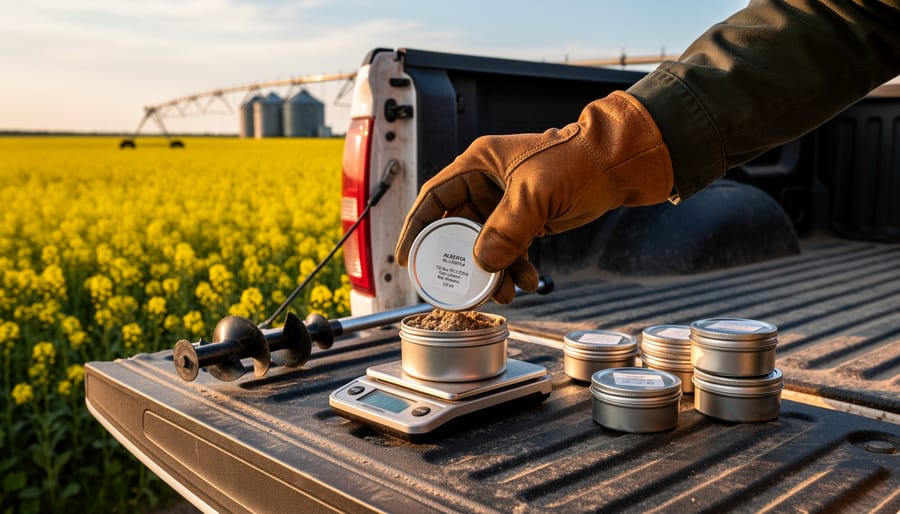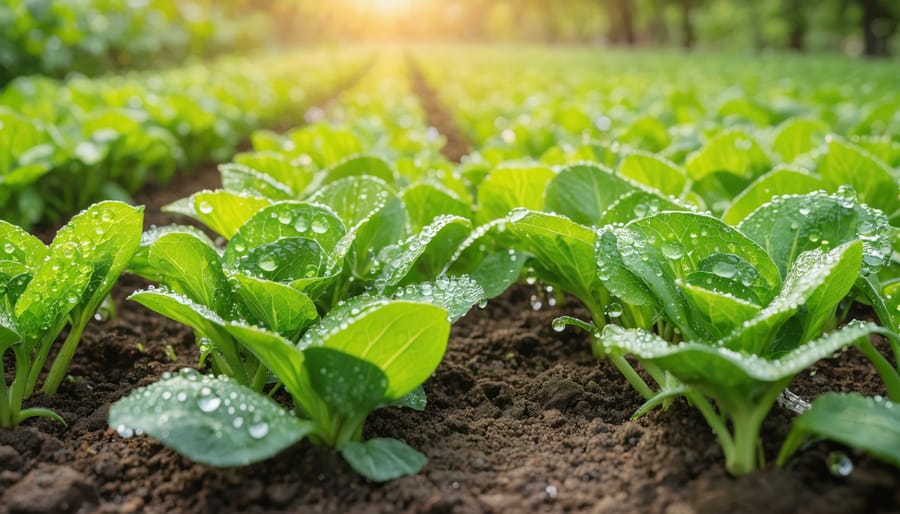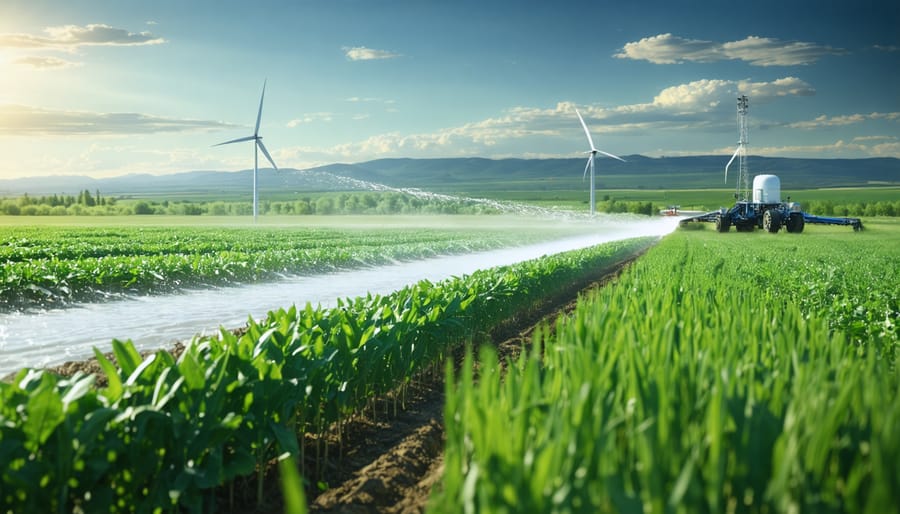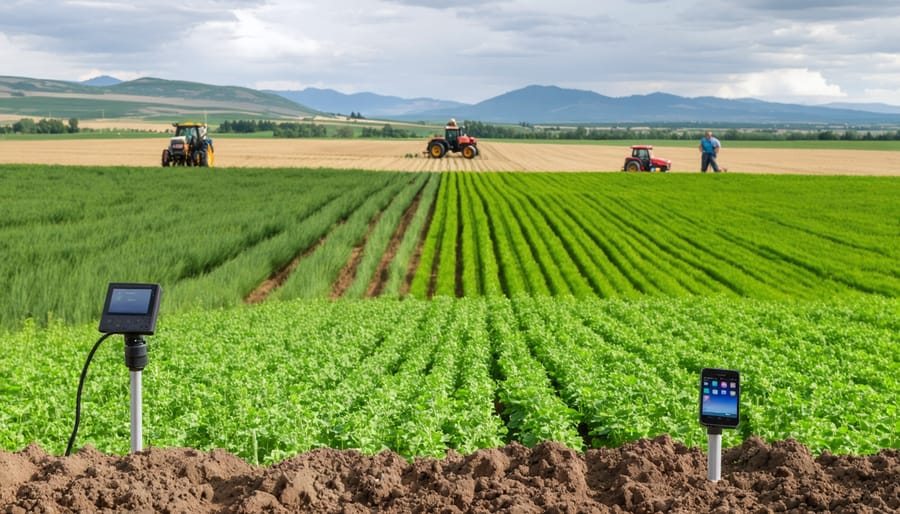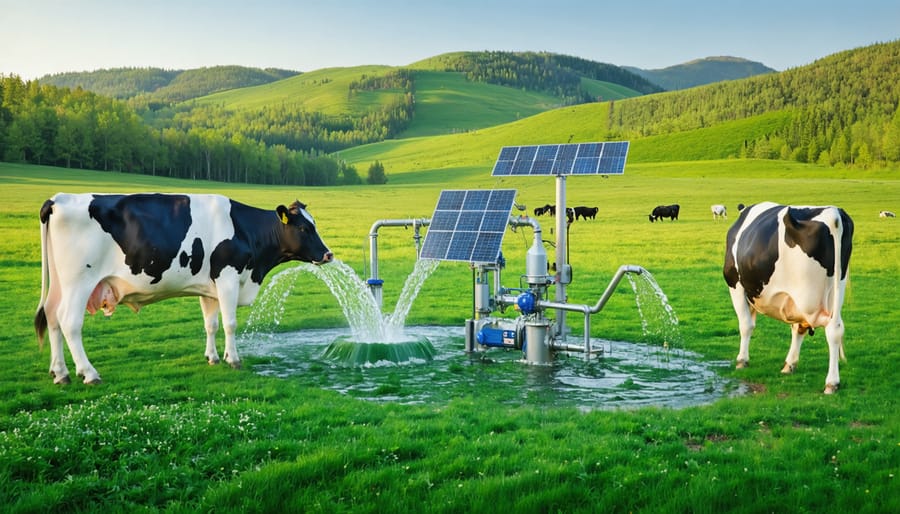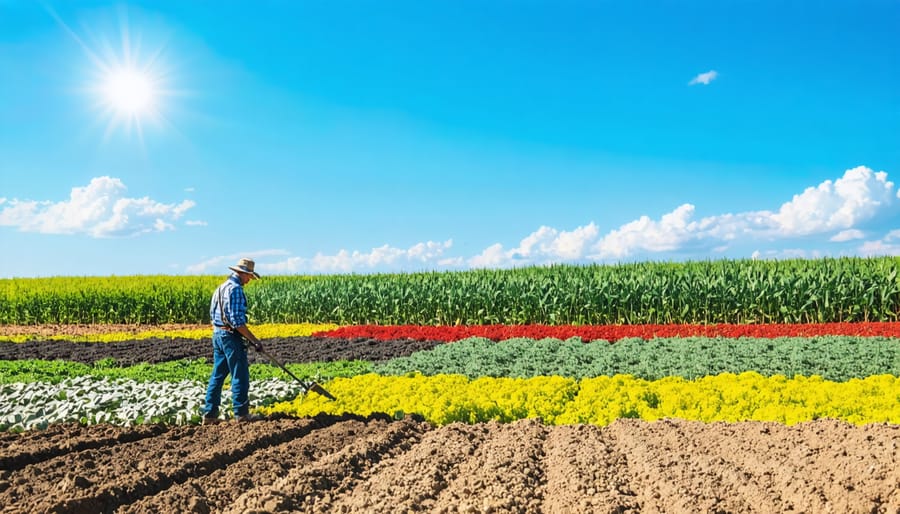Select drought-resistant pulse crops like lentils and chickpeas to reduce irrigation needs by up to 40% compared to traditional grain crops while maintaining profitable yields in Alberta’s semi-arid conditions. Despite Alberta’s current water challenges, these water-efficient alternatives consistently deliver strong market returns with minimal environmental impact.
Plant short-season varieties of millet and sorghum, which require just 250-300mm of water per growing season and thrive in our prairie climate. These ancient grains have experienced surging market demand while offering exceptional drought tolerance and soil-building benefits.
Integrate drought-adapted oilseeds like safflower and camelina into existing rotations, reducing seasonal water requirements by 25-30% versus canola while opening new market opportunities. These specialized crops demonstrate remarkable resilience during moisture-stressed periods, protecting farm income when traditional options struggle.
These water-conscious crop selections help prairie producers maintain profitability while conserving our most precious resource – especially critical as regional moisture patterns become increasingly unpredictable.
Top Drought-Resistant Crops for Alberta’s Climate
Pulse Crops: Your Water-Saving Champions
When it comes to drought-tough crops, pulse crops are leading the charge in water conservation across Alberta’s farmlands. Lentils, field peas, and chickpeas have emerged as true champions of water efficiency, typically requiring only 200-300mm of water per growing season.
Lentils, in particular, have proven exceptionally resilient in our prairie conditions. Their deep root systems can access moisture stored deep in the soil profile, reducing the need for supplemental irrigation. Local success stories, like the Morrison family farm near Lethbridge, demonstrate how lentil crops thrived during the 2021 drought season while using 40% less water than traditional wheat crops.
Field peas share similar water-saving traits and offer excellent rotation benefits. Their nitrogen-fixing capabilities improve soil health, creating a win-win situation for both water conservation and soil management. Many Alberta farmers report successful yields with minimal irrigation, especially when planted early to capitalize on spring moisture.
Chickpeas, though slightly more demanding than lentils and field peas, still use significantly less water than conventional crops. They excel in our semi-arid regions, with most varieties requiring about 300mm of water throughout their growing cycle. The Bow Island region has seen particular success with chickpea production, even during challenging drought years.
These pulse crops not only conserve water but also command strong market prices, making them economically sound choices for forward-thinking Alberta farmers.
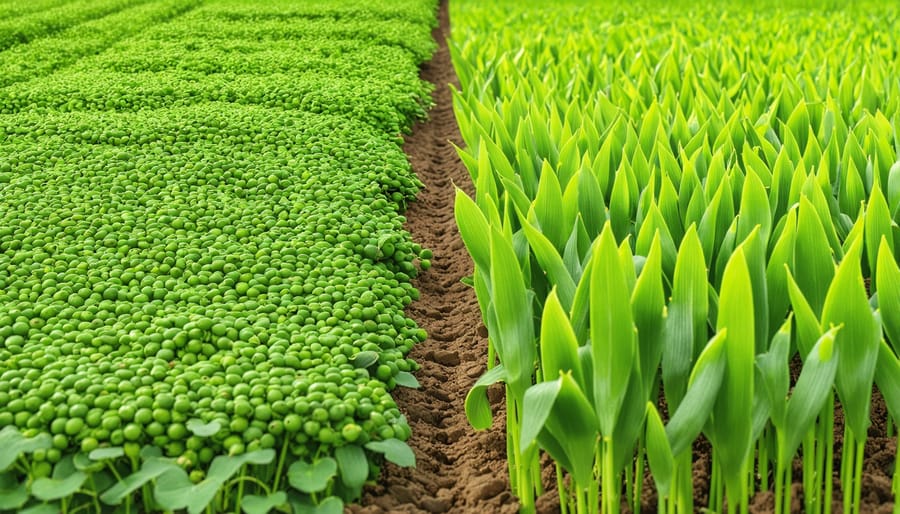
Small Grains That Thrive on Less
Small grains have become increasingly popular among Alberta farmers looking to maximize yields while minimizing water usage. Millet stands out as a particularly resilient option, requiring just 300-350mm of water during its growing season – significantly less than traditional wheat varieties.
Pearl millet and finger millet are proving especially successful in our prairie climate. These hardy crops can thrive in areas receiving as little as 200mm of seasonal rainfall, making them ideal choices for regions experiencing periodic drought conditions. Local farmer Jim Peterson from Lethbridge reports consistently good yields with pearl millet, even during drier seasons.
Several drought-tolerant wheat varieties have also shown promise in Alberta fields. AC Barrie and AC Navigator durum wheat varieties, developed specifically for prairie conditions, demonstrate excellent water-use efficiency while maintaining protein content. These varieties typically require 25-30% less irrigation than conventional wheat crops.
Ancient grains like amaranth and quinoa are gaining traction too. Though not technically cereals, these pseudo-grains offer similar nutritional benefits while demanding minimal water input. Several farms near Medicine Hat have successfully integrated these crops into their rotation, reporting water savings of up to 40% compared to traditional wheat crops.
For best results, timing your planting to coincide with natural rainfall patterns can further reduce irrigation needs. Early seeding, typically in late April or early May, helps these grains establish strong root systems before the heat of summer arrives.
Real Results: Alberta Success Stories
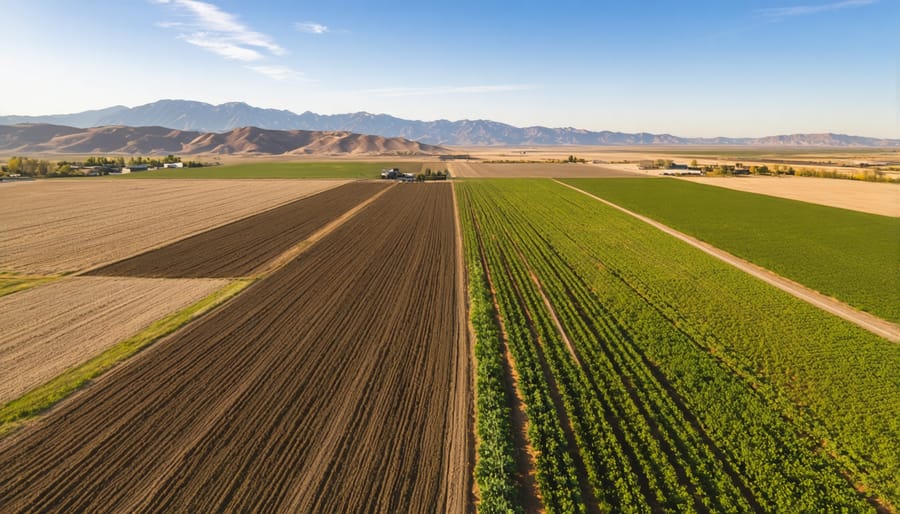
From Water-Hungry to Water-Wise
For Dan and Sarah Miller of Crossfield, Alberta, the decision to transition their 800-hectare farm to water-efficient crops wasn’t easy, but it’s paying dividends today. “Five years ago, we were struggling with water allocation issues during dry seasons,” Dan recalls. “We knew something had to change.”
The Millers started by converting 200 hectares from traditional wheat to drought-resistant varieties of barley and winter wheat. They also introduced pulse crops like lentils and dry peas, which naturally require less irrigation. “These crops need about 40% less water than what we were using before,” Sarah explains.
Their innovative approach included implementing precision irrigation systems and studying soil moisture levels to optimize watering schedules. The results were impressive: water usage dropped by 35% while maintaining profitable yields.
The farm now serves as a demonstration site for the Southern Alberta Water Stewardship Program, showing other farmers how to transition successfully. “The best part is that our operation is more resilient now,” Dan notes. “When water is scarce, we don’t panic like we used to.”
The Millers’ success has inspired neighbouring farms to explore similar changes, creating a ripple effect of water conservation across the region.
Economic Benefits of Smart Crop Selection
Selecting water-efficient crops isn’t just environmentally sound – it’s a smart financial decision for Alberta farmers. Recent studies from the University of Alberta show that farmers who implement water-saving strategies through smart crop selection can reduce irrigation costs by up to 40% annually.
Take the case of Mike Thompson, a third-generation farmer near Lethbridge, who switched 30% of his traditional wheat fields to drought-resistant legumes. His water bills decreased by $12,000 in the first year alone, while maintaining comparable profit margins. Similarly, rotating in low-water crops like chickpeas and lentils has helped many Prairie farmers diversify their income streams while building soil health.
The economics become even more compelling when considering government incentives. The Canadian Agricultural Partnership currently offers grants of up to $50,000 for implementing water-efficient farming practices, including transitioning to drought-resistant crop varieties. Additionally, these crops often command premium prices in today’s market, where sustainability-conscious buyers are willing to pay more for water-wise products.
Conservation-minded farming isn’t just about saving water – it’s about protecting your bottom line while building resilience for the future.
Making the Switch: Practical Steps
Soil Assessment and Preparation
Before planting water-efficient crops, understanding your soil’s characteristics is crucial for success. Start with proper soil assessment methods to evaluate texture, organic matter content, and water retention capacity. In Alberta’s diverse soil conditions, from Black Chernozemic to Brown Solonetzic soils, these factors significantly impact water management.
Begin preparation by conducting a soil test in early spring, focusing on pH levels and nutrient content. Add organic matter through cover crops or composted manure to improve water retention – aim for 3-5% organic matter content. For clay-heavy soils common in central Alberta, incorporate gypsum at 2-4 kg per 100 square metres to enhance drainage.
Consider implementing minimum tillage practices to maintain soil structure and reduce moisture loss. Create raised beds with slight slopes (1-2%) to manage excess water during spring melts. Add mulch layers of 5-10 cm thickness to minimize evaporation and maintain consistent soil moisture.
For optimal results, install soil moisture sensors at 15 cm and 30 cm depths to monitor water levels throughout the growing season. Many successful Alberta farmers have found that maintaining soil organic matter above 4% can reduce irrigation needs by up to 30% while supporting healthy crop development.
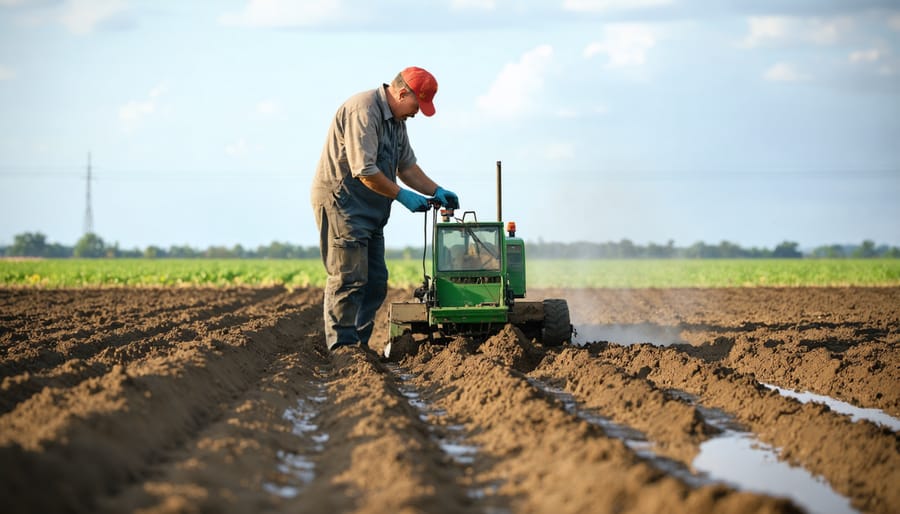
Timing Your Transition
Successful water-conscious farming in Alberta requires careful attention to timing and seasonal planning. The key is to align your planting schedule with natural precipitation patterns while maintaining a profitable rotation cycle.
Start by planning your spring seeding to coincide with Alberta’s typical rainfall patterns in May and June. This natural moisture can significantly reduce irrigation needs during crucial establishment phases. For most low-water crops like chickpeas and lentils, aim to plant in early May when soil temperatures reach 10°C and frost risk diminishes.
Consider implementing a three-year rotation system that alternates between shallow-rooted and deep-rooted crops. This approach helps maintain soil moisture at different depths while preventing nutrient depletion. For example, rotate drought-resistant wheat with field peas, followed by shallow-rooted barley.
“We’ve found that timing is everything,” says Sarah Thompson, a third-generation farmer from Lethbridge. “By aligning our seeding with spring moisture and choosing crops that mature before the August heat, we’ve cut our irrigation needs by 30%.”
Fall planning is equally important. Plant winter-hardy cover crops like fall rye in September to protect soil moisture and reduce spring irrigation requirements. These crops also provide valuable organic matter and prevent erosion during winter months.
Monitor long-term weather forecasts and Alberta Agriculture’s moisture maps to adjust your timing accordingly. During drier years, consider shifting planting dates earlier to maximize spring moisture. Remember that flexibility in your rotation schedule allows you to respond to changing conditions while maintaining water-efficient practices.
For best results, maintain detailed records of planting dates, rainfall, and crop performance to refine your timing strategies year after year.
Available Support Programs
Several support programs are available to Alberta farmers looking to transition to water-efficient crops. The Canadian Agricultural Partnership (CAP) offers grants of up to $50,000 for irrigation efficiency improvements and crop adaptation projects. Through the Environmental Farm Plan (EFP), producers can access funding for water management infrastructure and conservation initiatives.
The Alberta Irrigation Technology Centre provides free consultations and field demonstrations for farmers interested in water-efficient farming methods. Their expert advisors can help develop customized irrigation schedules and crop selection strategies based on your specific soil conditions and local climate patterns.
Local agricultural societies across Alberta offer peer mentorship programs, connecting experienced water-efficient farmers with those looking to make the transition. The Agriculture Financial Services Corporation (AFSC) provides specialized loans and insurance products designed to support crop diversification and sustainable farming practices.
For indigenous farmers, the First Nations Agriculture Training Program offers additional funding and technical support for implementing water-conscious farming methods. The Alberta Federation of Agriculture regularly hosts workshops and seminars focusing on drought-resistant crop varieties and efficient irrigation techniques.
Contact your local agricultural fieldman or visit the nearest Agriculture and Forestry office to learn more about eligibility requirements and application processes. Many of these programs offer year-round support and can be combined to maximize your transition benefits.
As Alberta’s agricultural landscape continues to evolve with our changing climate, the adoption of water-efficient crops represents a crucial step toward sustainable farming practices. Throughout this guide, we’ve explored various crops that not only minimize water usage but also offer promising economic returns for Canadian farmers.
The success stories from local farmers who have already implemented these water-conscious choices demonstrate that efficiency and profitability can go hand in hand. From drought-resistant wheat varieties to innovative pulse crops, these alternatives have proven their worth in our unique growing conditions.
Remember that transitioning to water-efficient crops doesn’t mean compromising on yield or market value. By selecting crops like chickpeas, lentils, and drought-resistant barley, you’re not just conserving water – you’re also positioning your farm for long-term sustainability and resilience.
Consider starting small by converting a portion of your land to these water-smart options. Connect with your local agricultural extension office or join farmer-led initiatives to learn from others’ experiences. The Alberta farming community has always been innovative and adaptive, and together, we can lead the way in water-conscious agriculture.
Take the first step today by assessing your current water usage and exploring which of these crops might work best for your operation. Your choices today will help shape a more sustainable future for Alberta’s agricultural sector.

